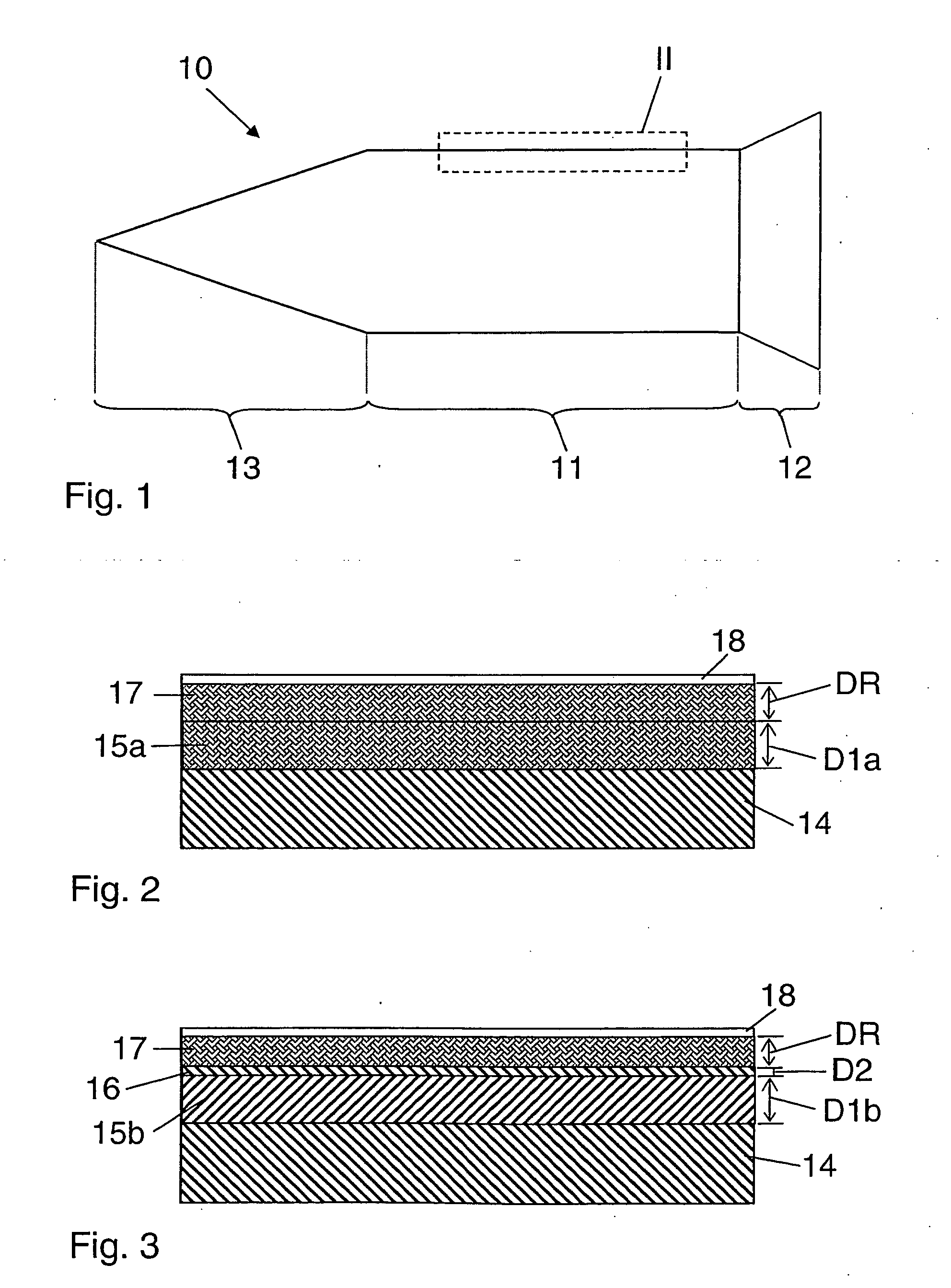Fastening element
a technology of fastening elements and components, applied in the direction of superimposed coating process, nails, screws, etc., can solve the problems of high-strength steel, inability to tolerate corrosive action well, and relatively expensive stainless chrome steel, etc., to achieve high resistance
- Summary
- Abstract
- Description
- Claims
- Application Information
AI Technical Summary
Benefits of technology
Problems solved by technology
Method used
Image
Examples
Embodiment Construction
[0026]A fastening element 10 according to the present invention, which is shown in FIGS. 1-2 and is formed as a nail, has a shaft 11, a head 12 provided at one end of the shaft 11, and a pointed tip 13 provided at the shaft other end. The fastening element 10 has, as shown in FIG. 2, a core zone 14 formed of a carbon steel having a martensitic or bainitic structure and a hardness of which lies in a range between about 30 and 62 HRC. At least in one region of the shaft 11, radially outwardly, there is provided a skin zone 17 formed of a first less hardened, low-carbon steel alloyed with a first alloy metal. The skin zone 17 which has, perpendicular to the surface of the core zone 14, a thickness DR in a range from 0.001 mm to 1 mm, has an austenitic structure. As an alloy metal a metal, which is selected from a group containing Ni, Mn, Co, Al, Cr, V or MO, is used. Within the skin zone 17, the concentration of the alloy metal increases from inside out. The austenitic skin zone can be...
PUM
| Property | Measurement | Unit |
|---|---|---|
| thickness | aaaaa | aaaaa |
| thickness | aaaaa | aaaaa |
| thickness | aaaaa | aaaaa |
Abstract
Description
Claims
Application Information
 Login to View More
Login to View More - R&D
- Intellectual Property
- Life Sciences
- Materials
- Tech Scout
- Unparalleled Data Quality
- Higher Quality Content
- 60% Fewer Hallucinations
Browse by: Latest US Patents, China's latest patents, Technical Efficacy Thesaurus, Application Domain, Technology Topic, Popular Technical Reports.
© 2025 PatSnap. All rights reserved.Legal|Privacy policy|Modern Slavery Act Transparency Statement|Sitemap|About US| Contact US: help@patsnap.com


